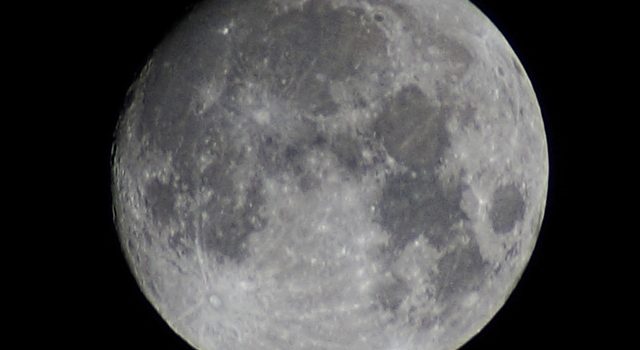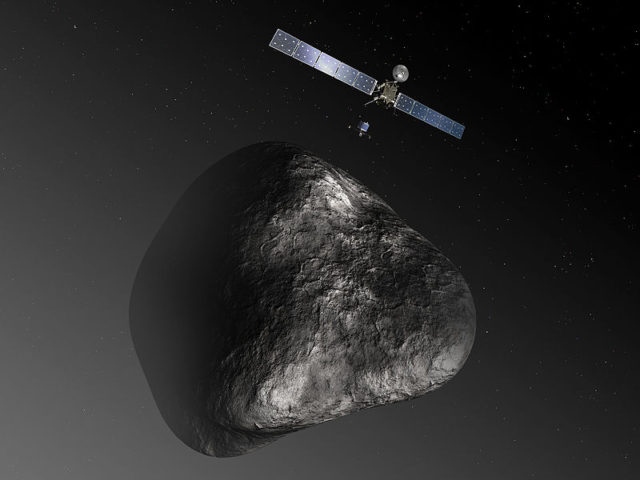What would happen if we had no moon?
That was a questioned posed by one of my kids this week. It lead to lots of discussion and interesting debate until finally we were talking about werewolves!

photo credit: kendoman26 Not Quite There! via photopin (license)
Firstly, lets consider how the Moon got there in the first place.
The Moon is approximately 4.51 billion years, about 60 million years younger than the Solar System. It formed from the debris from created by a massive collision between a large asteroid (about the size of Mars) and the early Earth.
Originally the Moon spun on its own axis much more quickly than it does today, as did the Earth. However, over time the Moon’s spin slowed down. This is because the gravitational pull of the Earth on the Moon distorted its shape, making it bulge in the centre and ultimately (it took an estimated 1,000 years) it slowed it down until the speed at which is spun on its axis matched the rate at which it orbited the Earth. This is why we only see one face of the Moon. If you still find that hard to understand test it out with two balls or check out this great video by Minute Earth.
Almost all moons in our solar system spin on their axis at the same speed as they orbit their planet.
Of course the gravitational forces between the Earth and the Moon are not one sided, the Moon also has a gravitational pull on the Earth and this causes some obvious effects here on Earth, like the tides in our oceans and seas.
Not that we know how it got there, let’s consider what would happen if it suddenly disappeared.
-
Darker nights
Although the night sky would still be lit by so many stars in our galaxy we would definitely notice it darker without the Moon. The full Moon on a cloudless night provides enough light for us to navigate by, in fact we can nearly read by its light. On these nights the Moon is about 1500 times brighter than Venus, the next brightest object in our night sky.
-
Shorter days
Without the stabilizing effect of the Moon, the Earth would begin to spin more quickly. It is estimated that a day on Earth would eventually only be about eight hours long, meaning there would be about three times more days (1095) in a year. However, this effect would happen very, very slowly. How long?
-
Less extremes between high and low tides
The gravitational forces exerted by the Moon causes tides to rise and fall in our seas and ocean, this is called lunar tides. Without the Moon we would see a big drop in the difference between high tide levels and low tide levels. There would still be some tidal difference (as the Sun exerts a gravitational force too – solar tides) but it would be a lot less, maybe as much as 40% less than what we have now.
-
A more extreme climate
As mentioned above, the Earth would spin more quickly on its axis without the Moon around to slow it down. The Earth is also tilted slightly on its axis as it spins. At the moment the Earth is at a tilt of 23.5 degrees on its axis. The Earth’s tilt can wobble slightly, but, due to the Moon, it never stays between 22 and 26 degrees. Without the stabilising forces of the Moon the Earth would wobble a lot more as it spins. This would lead to changes in our seasons. Sometimes it would tilt too far, resulting in extremes of temperatures and seasons. Sometimes there would be no tilt at all, meaning no seasons at all. Whatever way it goes, we would certainly find some extremes in our weather conditions if we had no Moon.
-
No solar eclipse
A solar eclipse happens when the Moon gets between the Sun and the Earth, casting a shadow over the Earth. There are different types of solar eclipses, but a complete solar eclipse is quite a spectacular show, the entire sun can be blocked briefly by a full moon, causing complete darkness from the correct viewpoint on Earth. Without a Moon, these spectacles (which can occur somewhere on earth every 18 months or so) would cease! Of course lunar eclipses would no longer exist either; A lunar eclipse occurs when the Sun, Earth and Moon align with the Earth in the middle, casting a complete shadow on the Moon and preventing any of the Sun’s light from reflecting off it .
-
No Werewolves!
We are back to the werewolves. My kids put up a good argument that without a moon Were-people could not change into Werewolves, and they therefore wouldn’t exist. I know better than to argue with that one!
*****
If your questions expand beyond the Moon why not check out my Appliance of Science column in today’s Irish Examiner where I answer questions on the Universe and beyond.


